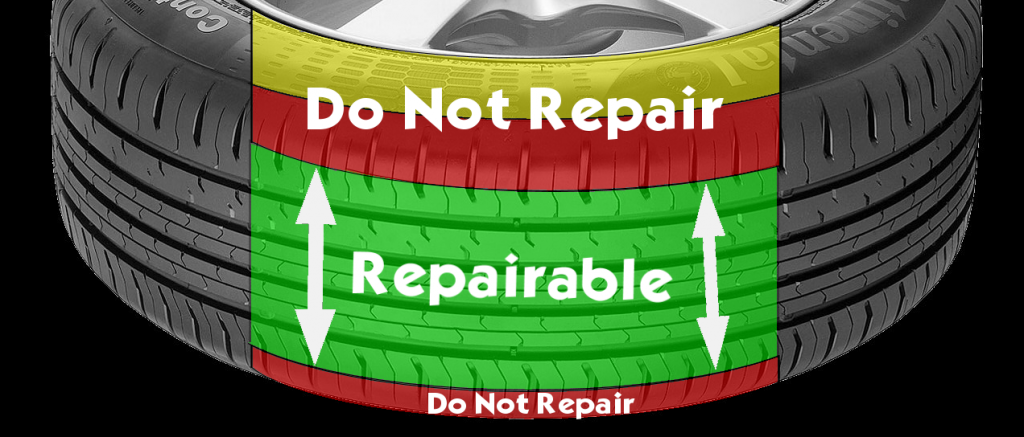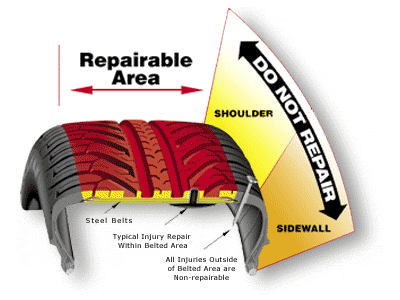

Most run-flat tires make a promise of temporary extended mobility at up to 50 miles per hour speeds for up to 50-mile distances in the event a puncture allows complete air pressure loss. However, even if driven within their speed and distance limitations, driving on run-flat tires with low or no air pressure can permanently damage their internal structure, surrendering strength and durability.
Therefore, Tire Rack recommends driving the slowest safe speed below 50 miles per hour and the shortest distance to a service provider's facility.
Unfortunately, when it's time to consider repair, even a trained tire specialist may be unable to confirm internal structure damage resulting from a run-flat tire having been driven in a severely underinflated or zero pressure condition. Such damage may not be visible on the surfaces of the tire's exterior sidewalls or interior liner making it impossible to determine tire suitability for repair or reuse. Because of this, Tire Rack and many tire manufacturers recommend replacement of run-flat tires driven in a severely underinflated or zero pressure condition.
Rubber Manufacturer Association (RMA) Policies
The RMA is an industry association whose membership includes most major domestic and foreign manufacturers selling tires in the United States. The RMA collectively establishes the foundation of industry policies, from which the tire manufacturers can specify their company's exact position.
The RMA makes available training presentations and workshop posters to assist tire technicians with the steps necessary to properly repair tires. Each tire manufacturer specifies RMA tire repair procedures must be followed precisely to have any tire repair deemed proper.
While basic RMA tire repair procedures remain the same for run-flat tires as non-run-flat tires, many tire manufacturers had issued specific policies that supersede RMA's standard reparability policies.
Selected Tire Manufacturer's Policies for Run-Flat Tire
Repair The following list summarizes tire manufacturers' repair policies, however it should be noted that every tire manufacturer that consents to repair, does so only after the punctured tire has passed a thorough exterior and interior examination.
| Manufacturer/Brand | Repair Policy | Additional Provisions |
|---|---|---|
| BFGoodrich | Permitted | 1 repair maximum |
| Bridgestone | Permitted | Only if 15 psi maintained |
| Continental | Does not recommend | Mfg. Road Hazard Program* |
| Dunlop | Permitted | |
| Firestone | Permitted | Only if 15 psi maintained |
| Goodyear | Permitted | |
| Kumho | Permitted | |
| Michelin | Permitted | 1 repair maximum |
| Pirelli | Not endorsed | Mfg. Road Hazard Program** |
| Yokohama | Not to be repaired | Mfg. Road Hazard Program*** |
Replaced free of charge first year or first 2/32" of wear (whichever comes first). Continental advises that a repair to one of its tires invalidates all other manufacturer's warranties.
Replaced free of charge first year or first 2/32" of wear (whichever comes first), then prorated until worn to 2/32" of remaining tread depth
5-year prorated replacement until worn to 2/32" of remaining tread depth if punctured in RMA defined repairable area
Use of run-flat tires deemed non-repairable may result in vehicle or property damage, as well as can cause personal injury or death.
No comments:
Post a Comment